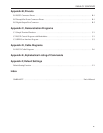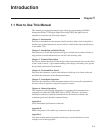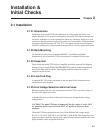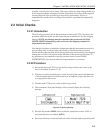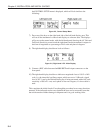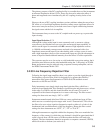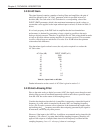
Installation &
Initial Checks
Chapter 2
2-1
2.1 Installation
2.1.01 Introduction
Installation of the model 7220 in the laboratory or on the production line is very
simple. Because of its low power consumption, the model 7220 does not incorporate
forced-air ventilation. It can be operated on almost any laboratory bench or be rack
mounted, using the optional accessory kit, at the user’s convenience. With an ambient
operating temperature range of 0
o
C to 35
o
C, it is highly tolerant to environmental
variables, needing only to be protected from exposure to corrosive agents and liquids.
2.1.02 Rack Mounting
An optional accessory kit, part number K02002, is available from EG&G
Instruments to allow the model 7220 to be mounted in a standard 19-inch rack.
2.1.03 Inspection
Upon receipt the model 7220 Lock-in Amplifier should be inspected for shipping
damage. If any is noted, EG&G INSTRUMENTS should be notified immediately
and a claim filed with the carrier. The shipping container should be saved for
inspection by the carrier.
2.1.04 Line Cord Plug
A standard IEC 320 socket is mounted on the rear panel of the instrument and a
suitable line cord is supplied.
2.1.05 Line Voltage Selection and Line Fuses
Before plugging in the line cord, ensure that the model 7220 is set to the voltage of
the AC power supply to be used.
A detailed discussion of how to check and, if necessary, change the line voltage
setting follows.
CAUTION! The model 7220 may be damaged if the line voltage is set for 110 V
AC operation and it is turned on with 220 V AC applied to the power input
connector.
The model 7220 can operate from any one of four different line voltage ranges,
90-110 V, 110-130 V, 200-240 V, and 220-260 V, at 50-60 Hz. The change from one
range to another is made by repositioning a plug-in barrel selector internal to the Line
Input Assembly on the rear panel of the unit.





